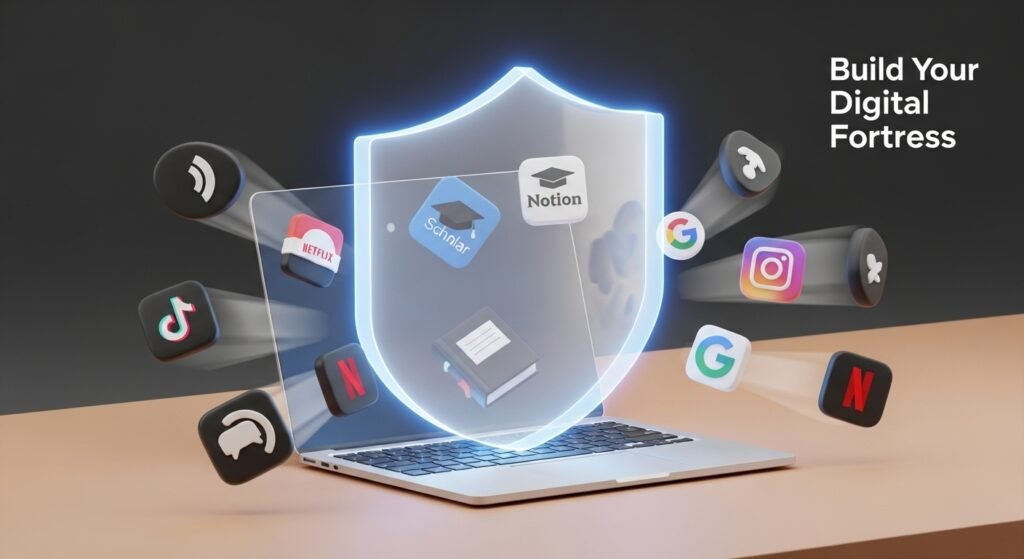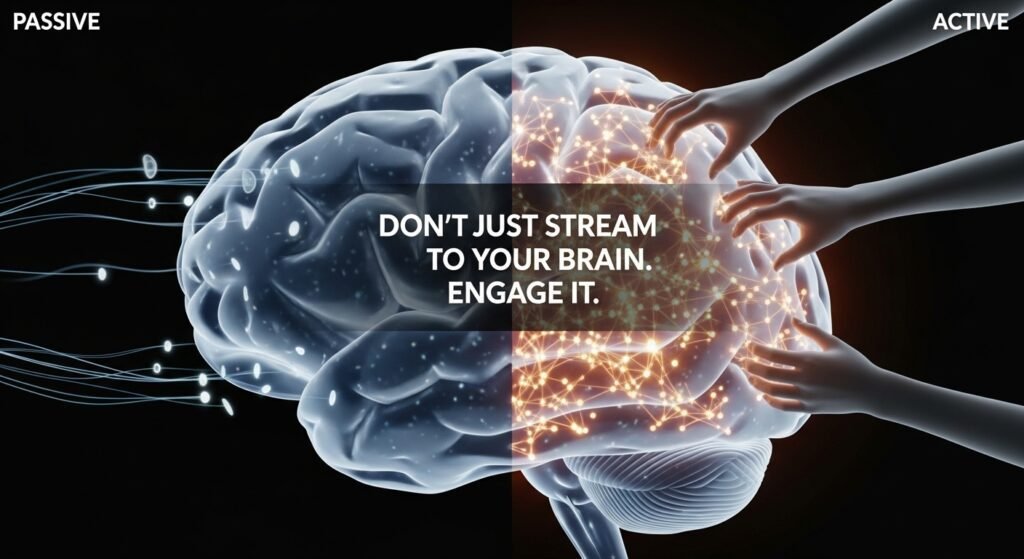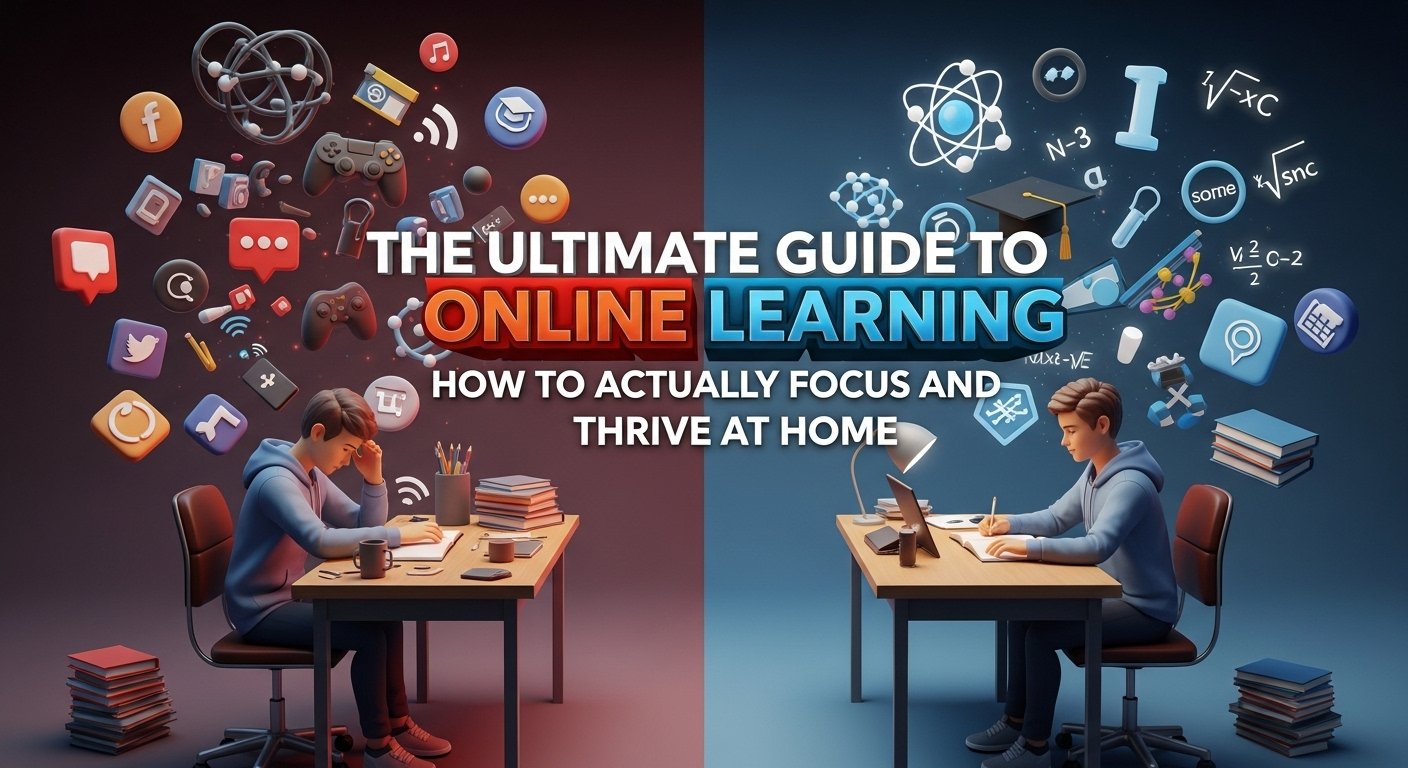The Ultimate Guide to Online Learning: How to Actually Focus and Thrive at Home
Let’s be honest for a second. The idea of online learning sounds like a dream, right? Roll out of bed, grab your laptop, and attend class in your pajamas. But the reality often looks a little different. It looks like you, trying to understand a complex calculus problem while your dog barks at the mailman, your phone buzzes with a dozen notifications, and the siren song of that new Netflix series calls to you from the next room. Suddenly, that dream of freedom feels a lot more like a struggle for focus.
If you’ve felt this way, you are not alone. As online learning has become a cornerstone of education for US students and professionals, many of us have realized that learning from home isn’t just a change of location—it’s a whole new skill set. The skills that helped you succeed in a traditional classroom don’t always translate to your home office. But here’s the good news: mastering online learning is not only possible, it’s a superpower that will serve you well into your future career. This isn’t just about surviving your online courses; it’s about building a system to thrive in them, and this guide will show you how.
The Big Mindset Shift: ‘School at Home’ vs. Effective Online Learning
The single biggest mistake most of us make is trying to replicate a traditional school day in our living rooms. We sit down at 9 a.m. expecting to absorb information passively for hours on end, just like in a lecture hall. But our homes are not lecture halls. They are filled with unique distractions and comforts that require a completely different approach.
Effective online learning demands a mindset shift from being a passive recipient of information to becoming the active CEO of your own education. This means taking ownership of your schedule, your environment, and your engagement in a way you never had to before. It requires proactivity, self-discipline, and intentional communication. Forget trying to recreate your old classroom; it’s time to build a personalized learning system that leverages the flexibility of learning from home.
Top Mental Health Resources for College Students
The Foundation: Crafting Your Learning Sanctuary (Physical & Digital)
You’ve probably heard the advice “have a dedicated workspace” a thousand times. It’s good advice, but it’s only half the story. Your environment is both physical and digital, and you need to conquer both to create a space where your brain knows it’s time to focus.
Your Physical Space: More Than Just a Desk
Your physical setup sends powerful psychological cues to your brain. A cluttered, uncomfortable space signals chaos and stress, while a clean, ergonomic space signals focus and calm.
- Ergonomics are Non-Negotiable: You’re going to be sitting for a long time. Investing in a decent chair that supports your back is crucial. Make sure your monitor is at eye level and your keyboard is positioned to keep your wrists straight. Your future self will thank you.
- Let There Be Light: Good lighting, especially natural light, is proven to boost mood and reduce eye strain. Position your desk near a window if possible. If not, get a good quality desk lamp to keep your space well-lit.
- Control the Clutter: A messy desk leads to a messy mind. At the end of each study session, take two minutes to tidy up. Put away books, organize papers, and wipe down the surface. This simple ritual helps you mentally close the loop on your “school day.”

Your Digital Space: Taming the Tab Monster
Your digital environment is just as important as your physical one. An internet browser with 37 tabs open (including social media, YouTube, and online shopping) is the digital equivalent of trying to study in the middle of a carnival.
- Create Separate Browser Profiles: Use a feature like Google Chrome Profiles to create a dedicated profile just for school. All your educational bookmarks, logins, and extensions live here. When you switch to your “Personal” profile, all the school stuff disappears, creating a powerful mental boundary.
- Embrace the App Blocker: Be honest with yourself. If you lack the willpower to stay off distracting sites, use technology to help. Apps like Freedom or Cold Turkey can block specific websites and apps for set periods. It’s like putting a digital lock on your distractions.
- Organize Your Files Ruthlessly: Don’t let your computer’s desktop become a digital graveyard. Create a clear folder structure for each course (e.g.,
Fall 2025 > PSYC 101 > Assignments > Lecture Notes). A clean digital filing system saves you time and reduces cognitive load.
Top Mental Health Resources for College Students

The Daily Blueprint: Master Your Time, Master Your Learning
The freedom of online learning can quickly turn into the tyranny of the unstructured day. Without the rigid schedule of bells and class changes, it’s easy for hours to slip by. The solution is to create your own structure through intentional routines and powerful time management techniques.
The Power of a “Mental Commute”
One of the biggest challenges of learning from home is the lack of separation between “school” and “life.” A “mental commute” is a short ritual you perform to signal the beginning and end of your study day. This could be a 15-minute walk around the block, brewing a specific cup of tea, or listening to a particular playlist. This simple act creates a psychological buffer that helps you switch gears.
Time Blocking and the Pomodoro Technique
Instead of a vague to-do list, use time blocking. Assign every task a specific block of time in your calendar. This forces you to be realistic about what you can accomplish and turns your good intentions into a concrete plan.
For the study blocks themselves, use the Pomodoro Technique. It’s simple but incredibly effective:
- Choose a single task to work on.
- Set a timer for 25 minutes.
- Work with intense focus, without any interruptions.
- When the timer goes off, take a 5-minute break.
- After four “Pomodoros,” take a longer break (15-30 minutes).
This method helps maintain high levels of focus and prevents burnout by breaking up marathon study sessions into manageable sprints.
Best Remote Internship Programs in 2025

The Secret Weapon: Active vs. Passive Online Learning
This is, without a doubt, the most important concept to grasp for effective online learning. Passively consuming information (like watching a video lecture or reading a PDF) leads to very low retention. Active learning, where you engage with the material, is where true understanding happens.
| Passive Online Learning (Low Retention) | Active Online Learning (High Retention) |
| Watching a recorded lecture without taking notes. | Pausing the lecture to summarize key concepts in your own words. |
| Reading and re-reading a textbook chapter. | Using the Feynman Technique: trying to teach the concept to someone else (or even an empty chair). |
| Scrolling through a class discussion forum. | Writing thoughtful replies and asking clarifying questions in the forum. |
| Simply looking at your old notes to study. | Creating flashcards, drawing mind maps, or working through practice problems. |
| Having the video lecture playing in the background. | Taking notes by hand. Studies show this improves conceptual understanding. |
Export to Sheets
Making the shift to active learning is the difference between information washing over you and information actually sticking in your brain. It requires more effort upfront, but it pays off enormously in better grades and less time spent re-studying.
My Own Wake-Up Call: From Passive Procrastinator to Active Learner
I have to admit, I learned this the hard way. During my first semester of heavy online learning, I thought I could multitask. I’d have a statistics lecture playing on one side of my screen and a video game running on the other. I told myself I was “absorbing” the material. The result? I completely bombed my midterm.
That failure was a wake-up call. I realized I wasn’t actually learning at all. I was just present. I scrapped my old approach and committed to active learning. I started taking handwritten notes during lectures. I formed a virtual study group where we’d take turns explaining complex topics to each other. I used the Pomodoro Technique to force myself into focused 25-minute blocks. The difference was night and day. My grades shot up, but more importantly, I felt less stressed because I actually understood and retained the material.
Your Tech Stack for Success: Tools That Actually Help
Leverage technology to support your active learning goals. Here are some of the best tools for students engaged in online learning:
- Note-Taking & Knowledge Management: Notion is an all-in-one powerhouse for organizing notes, tasks, and entire courses. Obsidian is amazing for creating a “second brain” by linking notes together.
- Task Management: Todoist or Asana are great for keeping track of assignments and deadlines. A simple Google Calendar with time blocking can also work wonders.
- Active Recall: Anki is a free, powerful flashcard app that uses spaced repetition to lock information into your long-term memory.
- Collaboration: Don’t underestimate the power of community. Use Slack or Discord to create a dedicated server for your class or study group to ask questions and share resources.
Best Remote Internship Programs in 2025

Don’t Forget to Be Human: Combating Burnout and Isolation
Finally, it’s crucial to take care of your well-being. The biggest downside of online learning can be the isolation and the blurring of boundaries.
- Fight the Loneliness: Make an effort to connect with classmates. A virtual study group isn’t just for academics; it’s a social lifeline. Schedule virtual “coffee chats” with no agenda other than to connect.
- Protect Your Eyes: Staring at a screen all day is exhausting. Use the 20-20-20 rule: every 20 minutes, look at something 20 feet away for 20 seconds.
- Log Off! This is the most important rule. When your scheduled study time is over, close the laptop and walk away. Give your brain and body a real break. The “right to disconnect” is essential for preventing burnout and maintaining a healthy work-life balance.
Conclusion: Mastering Online Learning is Mastering Your Future
The skills you build while mastering online learning—self-discipline, time management, proactive communication, and digital literacy—are the very skills that are in high demand in the modern workforce. By moving beyond simply surviving your online classes and instead building a robust system to thrive in them, you’re not just investing in your GPA; you’re investing in your future.
So take control of your space, architect your time, engage with your material actively, and don’t forget to take care of yourself. You have the power to make your online learning experience not just effective, but truly transformative.
What is the one tip from this guide that you plan to implement this week? Share your commitment in the comments below—let’s hold each other accountable!



